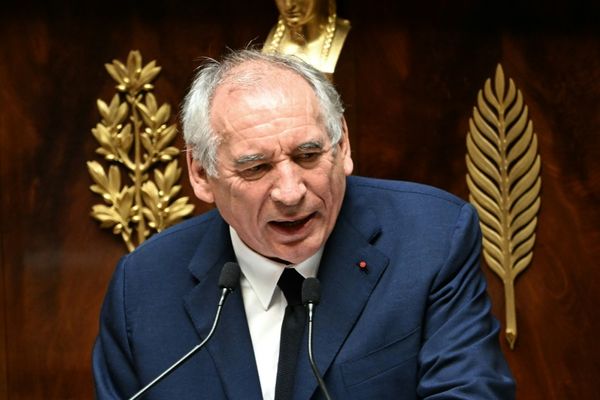VanEck, founded in 1955 by John van Eck, has built a 70-year legacy of spotting long-term trends before they enter the mainstream. The firm has consistently delivered some of the best funds that help investors diversify into untapped and new markets.
Today, led by John's son, Jan van Eck, the privately held firm manages mutual funds, ETFs and portfolios that cover equities, bonds, commodities, alternative investments and digital assets.
Based in New York, Van Eck manages $139 billion in assets, of which 95% are in ETFs. It employs 460 people, including over 73 dedicated investment professionals. The firm also has full-fledged operations in Europe, Asia-Pacific, Latin America and Australia.
Over seven decades, VanEck has navigated the ups and downs of the markets. It defined its history with pioneering launches into international markets, gold, ETFs and bitcoin. "One can't define the firm's history without talking about ETFs," said CEO van Eck. "All of these (launches) were very odd at the time that we did it."
Jan van Eck joined the firm in 1992 and became CEO in 2010.
He discusses funds focused on AI-driven demand, diversification away from the dollar and income-generating bonds. He also outlines strategies and outlook shaping the firm's current and future direction.
Company Behind Best Funds Turns 70
IBD: VanEck turns 70 this year. What key milestones stand out, and how is the firm positioned for the future?
Jan Van Eck: When my father, John van Eck, founded the firm in 1955, it was to offer U.S. investors access to international markets and was one of the first to do so. Then in 1968, he launched the first U.S. mutual fund focused on gold equities, which seemed almost unthinkable at the time, because gold was pegged to the dollar at $35 an ounce. The U.S. then abandoned the gold standard, and gold went up to over $800 an ounce in the 1970s.
This focus on identifying impactful trends and then acting with conviction to deliver meaningful access to investors has consistently guided us. This led us to emerging markets in the 1990s, ETFs in 2006 and digital assets in 2017 when we were the first established ETF issuer to file for a bitcoin-linked ETF.
We've been through decades of monetary shifts, inflation cycles and geopolitical disruption, survived the 2008-2009 financial crisis and are now witnessing a digital revolution in finance. Through it all, our long-standing approach remains relevant today. The world, technology and finance are constantly changing, and our job is to adapt thoughtfully while staying grounded in purpose, discipline and intellectual curiosity.
Boosting Ranks Of Winners
IBD: Since we last spoke, VanEck has grown its ETF lineup. Which new or popular ETFs are seeing the most interest this year?
Van Eck: Private markets are growing rapidly as investors look beyond traditional stocks and bonds for income. However, high investment minimums, lockup periods and complex structures can make them difficult to access, so we launched the VanEck Alternative Asset Management ETF this year to offer simpler exposure to that space. GPZ provides access to the firms that are structuring and managing private market capital, across equity, credit, infrastructure and real estate.
The VanEck Uranium and Nuclear ETF has been one of our strongest performing ETFs this year and has seen strong inflows. It's part of the AI phase two trade. AI is creating energy demand and nuclear is gaining policy support as a stable, clean power force. With NLR, you get exposure across the nuclear energy ecosystem. Holdings include uranium miners but extend well beyond that to also include industrial companies and utilities.
The VanEck J.P. Morgan EM Local Currency Bond ETF is also seeing strong flows this year. It's providing attractive yield in an environment where the dollar is under pressure. EMLC gives investors access to local currency bonds from emerging markets, where many countries actually have stronger fundamentals than developed markets: faster economic growth, less debt and more proactive central banks.
Rising To The Top
IBD: Which ETFs are top performers this year and what's driving their success?
Van Eck: Gold and bitcoin have been the best-performing assets over the past year, with both serving as hedges against de-dollarization. Consequently, our gold bullion and miners ETFs and Bitcoin ETF are among our top performing ETFs this year.
As mentioned, NLR is also one of our top performers this year, up over 40% year to date, driven by rising energy demand stemming from AI as well as growing policy support.
IBD: How do you spot emerging market trends and develop ETF ideas ahead of the curve?
Van Eck: We take a macro approach and look at political, social, economic and technological shifts shaping the world. We ask ourselves: what risks or opportunities are being overlooked in investor portfolios? When we see something transformative and potential long-term opportunity, we explore how to give investors access.
Best Funds For Bonds
IBD: Which of your fixed-income ETFs are best suited for today's market?
Van Eck: I think our two collateralized loan obligation (CLO) ETFs are particularly timely right now. Rates remain elevated and uncertainty around the Fed's path still lingers. And the floating rate nature of CLOs can help investors manage interest rate risk in this environment. VanEck CLO ETF invests across investment-grade tranches, while VanEck AA-BB CLO ETF focuses on mezzanine tranches. Both are actively managed by PineBridge Investments, the funds' sub-adviser.
IBD: What's your economic outlook for the 12 months and how does it influence your strategy?
Van Eck: Our base case is for a $1 trillion cut to the deficit, or about 3% of GDP. With lower government spending, I would expect economic growth to slow, which in turn should begin to ease inflationary pressure. This should eventually pave the way for lower interest rates.
Our focus strategically remains on long-term structural trends. And those themes are already in motion and not likely to change. Gold and bitcoin remain critical hedges, and AI is unlocking demand in energy — notably nuclear — as well as semiconductors. We also see emerging markets such as India and parts of the Middle East gaining momentum on the back of digitization and infrastructure needs that align with structural growth trends.







